English:
Hey DIY friends! I was originally going to work on a furniture repair that I need to do for this contest, but then the Universe stepped in and with perfect timing, gave me a learning moment to share! If you have a sink disposal, this is a pretty common issue, so I thought it was perfect to share, since it's an easy fix.

Break out the tool box!
I was washing up and noticed that my sink drain with the disposal was backing up. When I flipped the switch to run the disposal, it just "errrrrr"-d at me and didn't work. AHA! I knew what to do, because years ago I had the same thing happen and the maintenance guy told me how to fix it, since it was so simple.

pictured: a really slow drain
All you need to fix this is an Allen wrench/hex key of the right size. I wasn't sure what size I needed, so I brought out all the ones I have:

answer: it was the big one
So go under your sink. See the big black disposal there?
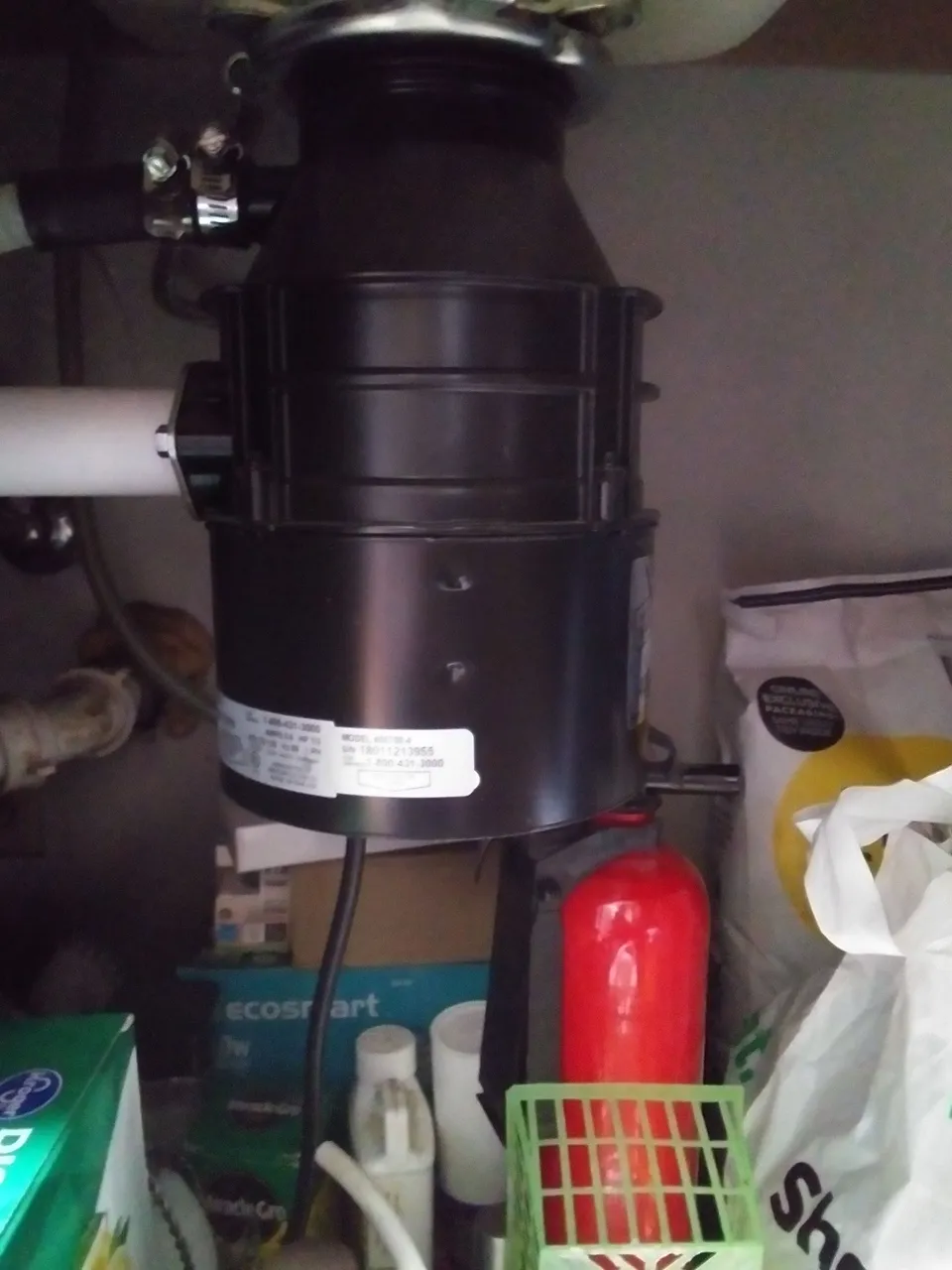
don't @ me about the Miracle Gro down there; that box is like 20 years old and I've been slowly using it up interspersing it with more organic plant foods, lol. waste not!
If you look underneath it, you'll see this:
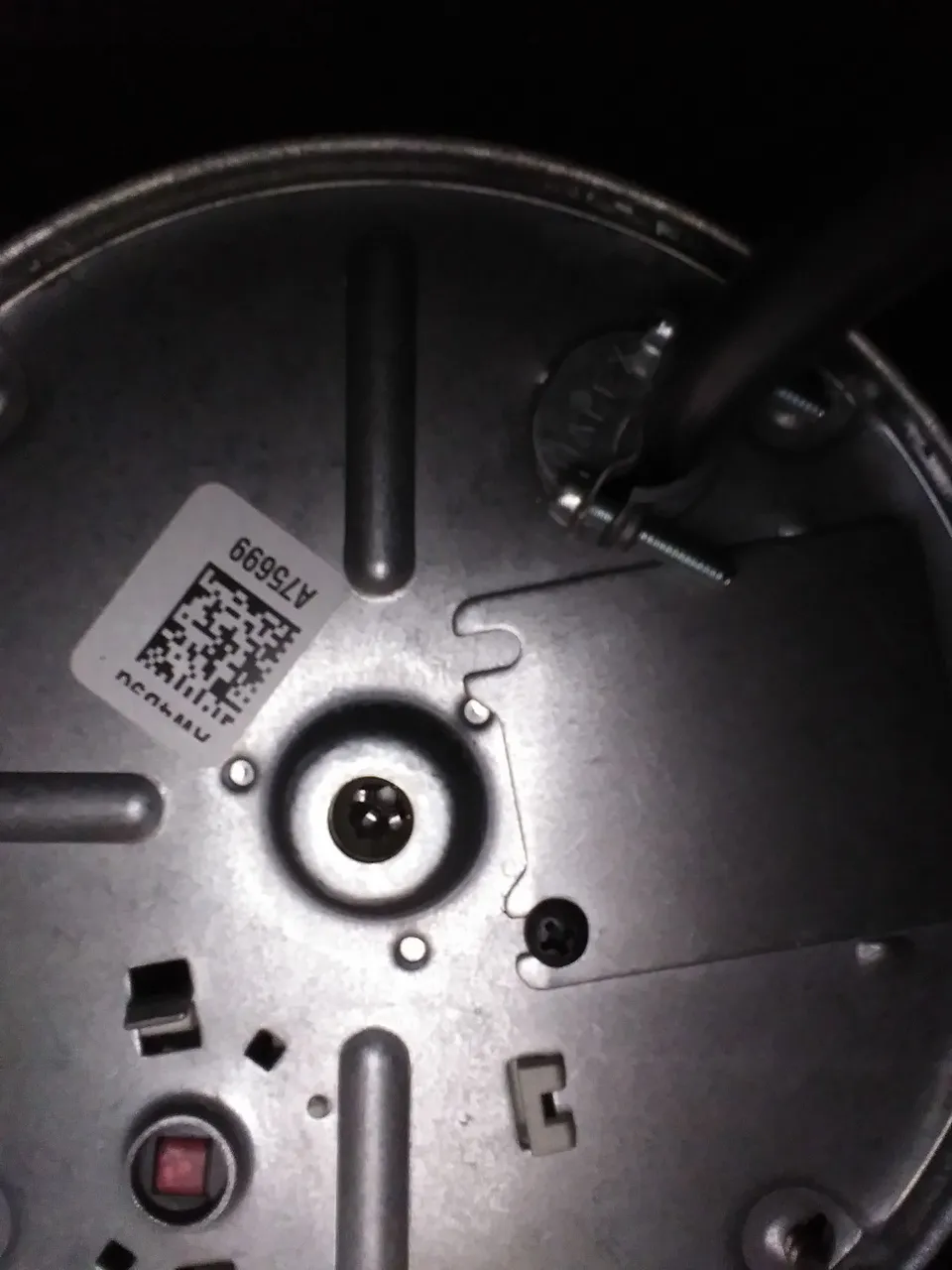
That middle hole part is where you put the Allen wrench. I tried turning it first, and it wouldn't budge. Then I remembered something about a button, and pressed that red button, and tried the wrench again. Ta-da, it turned!
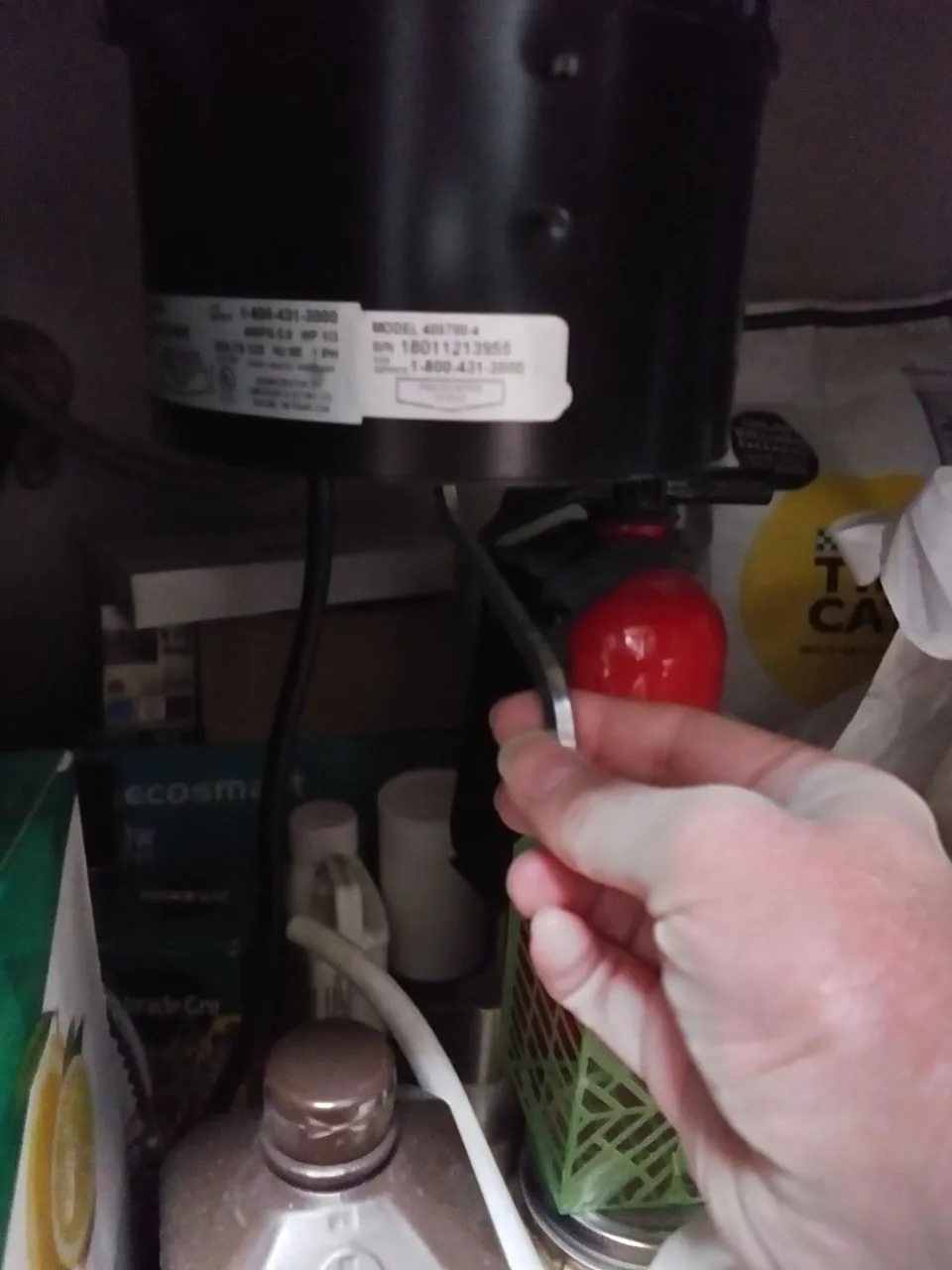
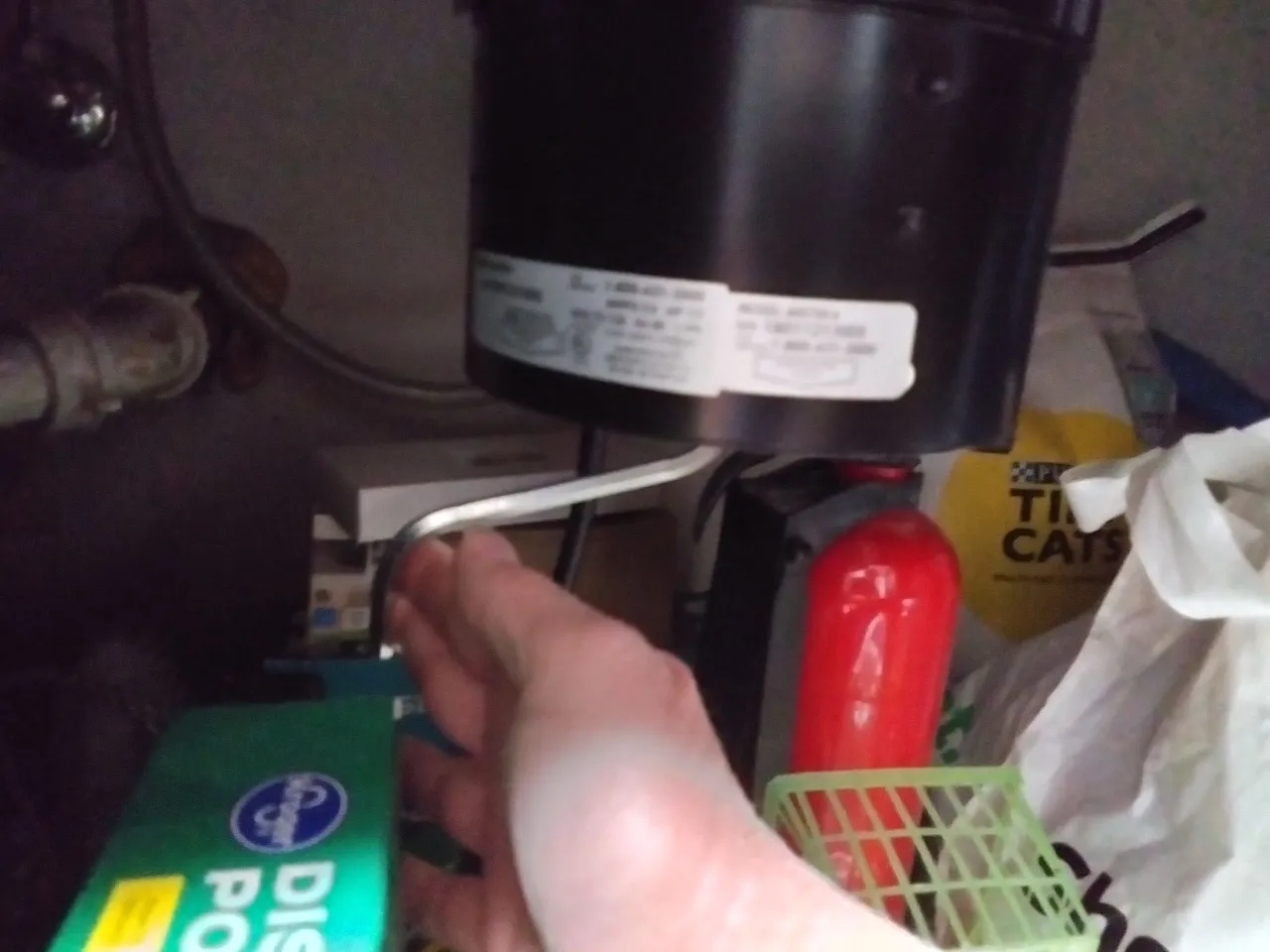
I spun it around back and forth a bit, and you'll probably hear some crunching sounds when you do that (I did), as the blades inside the disposal are grinding whatever is in there. And that's it! I stood back up, turned on the water, and flipped the switch. The disposal was working again! Easy fix, no?
When you do this, you are just manually spinning the blades at the bottom of the disposal.
I know sink disposals are kinda regional/sometimes dependent on the age of your home. They were only invented in the 1920s, and the house I grew up in in New Jersey was built in the 20s, so we didn't have one (the kitchen had not been remodeled, I'm pretty sure we had the original sink). I actually didn't know these things existed until we moved to Colorado, where most homes are newer and so these are pretty common. Another age difference, at least in the US, is that in Jersey we had the washing machine in the kitchen. That was also true here in two homes I lived in that dated to the 1940s, but in newer homes they'll often have a laundry room, or put them in the basement, or in my apartment, built in the 80s, it's in the bathroom. So you can see the plumbing differences in different aged homes!
Anyway, so I know that not everyone will have one of these (and in some countries I think they're rare overall but I don't know if that's because the housing stock is older than the US or if it's just that it isn't a common thing sold there), but this is a common thing that will happen if you have one. It just kind of jams up on you, often because of something small inside. You're not supposed to dump coffee grounds down it, for example, and a lot of people don't know that (I once had a conversation with a plumber about it, and he had a good rant about the crazy things people put down their sink disposals, lol). So I don't dump my grounds down there, but since I've only been in this apartment for a few months, it's possible that the previous resident did.
Basically, you should treat the sink disposal as if it's only there to help wash down the detritus in the sink after you wash the dishes, and not much else. Some people will dump whole loads of foodstuffs down there, but that can break it! No bones, no large amounts of cooking waste, nothing like that. The plumber who I had a chat with especially was annoyed at restaurant workers who thought it was okay to peel restaurant amounts of produce while cooking and run the peels all through the disposal instead of putting it in the compost or trash. So like, cases of fruit peels at a time. No wonder their disposals often broke!
Here is a good article from a plumber/HVAC company with some sink disposal myths debunked. For instance, some people think that ice (or eggshells, according to this article, which I hadn't heard before; I had heard ice cubes, though) will sharpen the blades of the disposal. That's not true! You can, however, put in ice cubes to help clean out any foodstuffs stuck on the blades, and the article suggests it's even better if you make ice out of vinegar or lemon juice to really clean the inside out. It also says that you should run the water for about a minute to make sure all the food has been drained out, and to always use cold water when using the disposal, so that any fat that managed to sneak down there (don't pour fat down the sink either!) doesn't melt and cause blockages when it re-solidifies elsewhere.
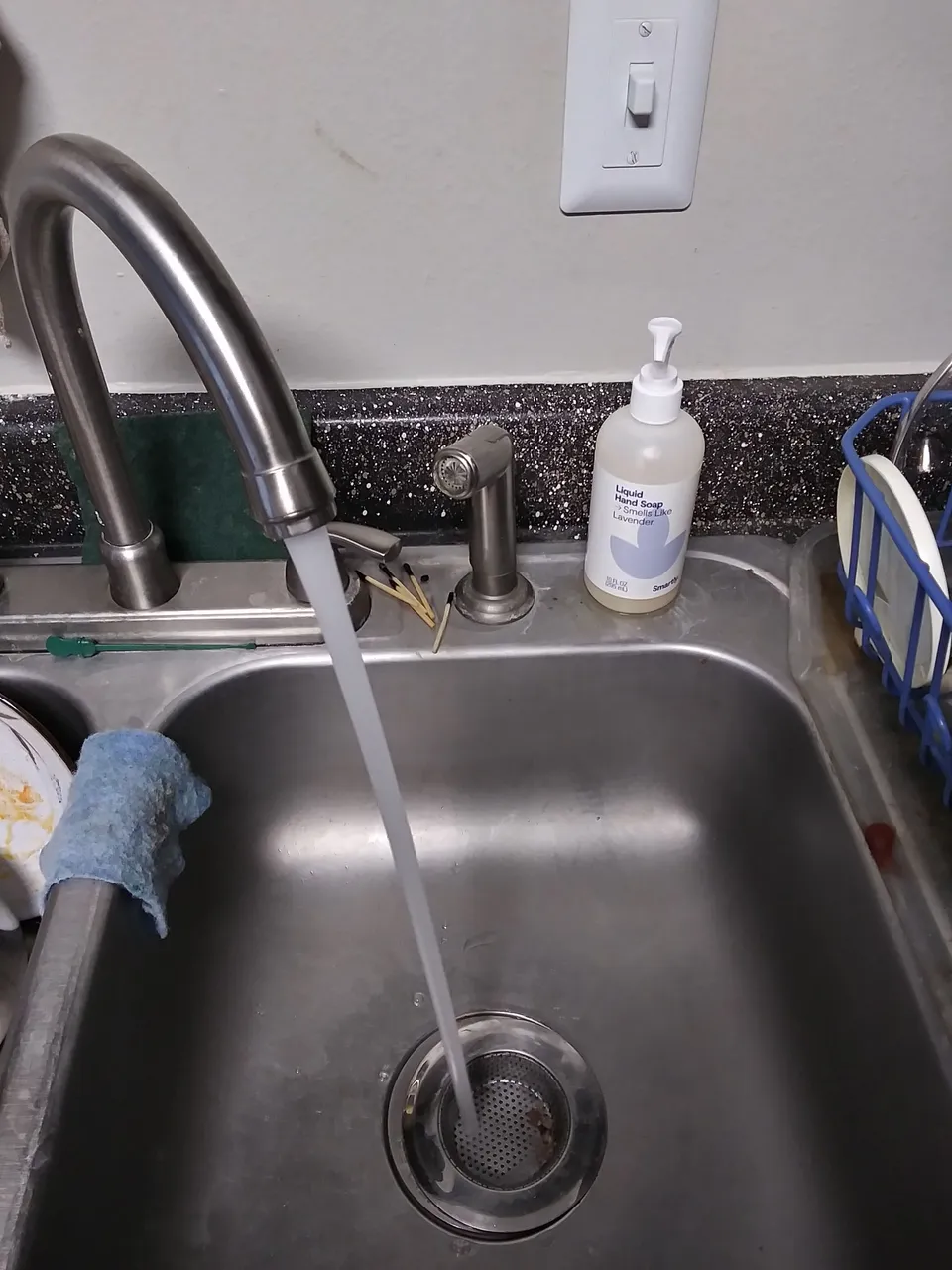
pictured: happy disposal sounds
So there you are, a simple fix for a common plumbing problem, if you have a disposal in your sink. I hope this was helpful to others! Plumbers can be hella expensive, so if you can do a simple fix like this it can save a ton of money. Treat your disposal right, and it will help you keep your plumbing clear of clogs from food and such.
You'll also see I keep a strainer over the drain there - so that way I don't drop things down into the disposal that don't belong (and also so that large food bits get caught and I can put them in the trash). I've accidentally had a utensil fall down there before, and I promise cutlery and spinning blades don't mix, lol. I hate having to fish something out of there with my hand - I always feel like the blades are going to eat my hand, even though they are for sure off when I do that - so I try and make sure I don't drop anything down there in the first place. Be safe! :)
 Amazing art made for me that I got from a trade on Simbi! Simbi is a bartering website that I love. If you'd like to try it out, please use my referral link: https://simbi.com/wren-paasch/welcome
Amazing art made for me that I got from a trade on Simbi! Simbi is a bartering website that I love. If you'd like to try it out, please use my referral link: https://simbi.com/wren-paasch/welcome
¡Arte increíble hecho para mí que obtuve de un intercambio en Simbi! Simbi es un sitio web de trueque que me encanta. Si desea probarlo, utilice mi enlace de referencia: https://simbi.com/wren-paasch/welcome
Español:
¡Hola amigos del bricolaje! Originalmente iba a trabajar en la reparación de un mueble que necesito hacer para este concurso, pero luego el Universo intervino y en el momento perfecto, ¡me dio un momento de aprendizaje para compartir! Si tiene un triturador de basura, este es un problema bastante común, así que pensé que era perfecto para compartir, ya que es una solución fácil.

¡Rompe la caja de herramientas!
Estaba lavando y noté que el drenaje de mi fregadero con el triturador estaba retrocediendo. Cuando accioné el interruptor para ejecutar la eliminación, simplemente "errrrrr" -d en mí y no funcionó. ¡Ajá! Sabía qué hacer, porque hace años me pasó lo mismo y el de mantenimiento me dijo cómo solucionarlo, ya que era muy sencillo.

en la foto: un drenaje realmente lento
Todo lo que necesita para arreglar esto es una llave Allen/llave hexagonal del tamaño correcto. No estaba seguro de qué tamaño necesitaba, así que saqué todos los que tengo:

respuesta: era el grande
Así que ve debajo de tu fregadero. ¿Ves el gran triturador negro que hay allí?

- no me @ sobre el Miracle Gro allí abajo; esa caja tiene como 20 años y la he ido usando poco a poco intercalando con más alimentos vegetales orgánicos, jejeje. ¡No pierda!*
Si miras debajo, verás esto:

Esa parte del agujero del medio es donde pones la llave Allen. Intenté girarlo primero y no se movía. Luego recordé algo sobre un botón, presioné ese botón rojo y probé la llave inglesa nuevamente. Ta-da, se volvió!


Lo hice girar de un lado a otro un poco, y probablemente escuchará algunos crujidos cuando lo haga (lo hice), ya que las cuchillas dentro del triturador trituran lo que sea que haya allí. ¡Y eso es! Me puse de pie, abrí el agua y accioné el interruptor. ¡La trituradora estaba funcionando de nuevo! Fácil arreglo, ¿no?
Cuando hace esto, simplemente está girando manualmente las cuchillas en la parte inferior del triturador.
Sé que las eliminaciones de fregaderos son un poco regionales/a veces dependen de la antigüedad de su hogar. Solo se inventaron en la década de 1920, y la casa en la que crecí en Nueva Jersey se construyó en los años 20, por lo que no teníamos uno (la cocina no había sido remodelada, estoy bastante seguro de que teníamos el fregadero original) . De hecho, no sabía que existían estas cosas hasta que nos mudamos a Colorado, donde la mayoría de las casas son más nuevas y, por lo tanto, son bastante comunes. Otra diferencia de edades, al menos en Estados Unidos, es que en Jersey teníamos la lavadora en la cocina. Eso también fue cierto aquí en dos casas en las que viví que datan de la década de 1940, pero en las casas más nuevas a menudo tienen un cuarto de lavado, o las ponen en el sótano, o en mi apartamento, construido en los años 80, está en el baño. ¡Para que pueda ver las diferencias de plomería en casas de diferentes edades!
De todos modos, sé que no todos tendrán uno de estos (y en algunos países creo que son raros en general, pero no sé si eso se debe a que el stock de viviendas es más antiguo que en los EE. es algo común que se vende allí), pero esto es algo común que sucederá si tienes uno. Simplemente te atasca, a menudo debido a algo pequeño dentro. Se supone que no debes tirar café molido, por ejemplo, y mucha gente no lo sabe (una vez tuve una conversación con un plomero al respecto, y él tuvo una buena diatriba sobre las cosas locas que la gente pone sus trituradores de fregadero, lol). Así que no tiro mis terrenos allí, pero como solo he estado en este apartamento durante unos meses, es posible que el residente anterior lo haya hecho.
Básicamente, debe tratar el triturador del fregadero como si solo estuviera allí para ayudar a lavar los desechos en el fregadero después de lavar los platos, y no mucho más. Algunas personas arrojarán montones de alimentos allí, ¡pero eso puede romperlo! Sin huesos, sin grandes cantidades de residuos de cocina, nada de eso. El plomero con el que conversé especialmente estaba molesto con los trabajadores del restaurante que pensaban que estaba bien pelar cantidades de productos del restaurante mientras cocinaban y pasar las cáscaras por todo el triturador en lugar de ponerlas en el compost o la basura. Así como, cajas de cáscaras de frutas a la vez. ¡No es de extrañar que sus disposiciones se rompieran a menudo!
Aquí hay un buen artículo de una empresa de plomería/HVAC con algunos mitos sobre la eliminación de fregaderos desacreditados. Por ejemplo, algunas personas piensan que el hielo (o las cáscaras de huevo, según este artículo, que no había escuchado antes; sin embargo, había escuchado cubitos de hielo) afilarán las cuchillas de la trituradora. ¡Eso no es cierto! Sin embargo, puede poner cubitos de hielo para ayudar a limpiar cualquier alimento que se haya quedado atascado en las cuchillas, y el artículo sugiere que es aún mejor si hace hielo con vinagre o jugo de limón para limpiar realmente el interior. También dice que debe dejar correr el agua durante aproximadamente un minuto para asegurarse de que se haya drenado toda la comida, y que siempre use agua fría cuando use el triturador, para que cualquier grasa que haya logrado colarse allí (no vierta ¡la grasa también se tira por el fregadero!) no se derrite ni causa obstrucciones cuando se vuelve a solidificar en otro lugar.

en la foto: sonidos de disposición feliz
Ahí lo tiene, una solución simple para un problema común de plomería, si tiene un triturador de basura en su fregadero. ¡Espero que esto haya sido útil para otros! Los plomeros pueden ser muy costosos, por lo que si puede hacer una solución simple como esta, puede ahorrar una tonelada de dinero. Trate bien su triturador y le ayudará a mantener sus tuberías libres de obstrucciones de alimentos y cosas por el estilo.
También verás que mantengo un colador sobre el desagüe allí, para que así no tire cosas que no pertenecen al triturador (y también para que los trozos grandes de comida queden atrapados y pueda tirarlos a la basura). ). Accidentalmente se me cayó un utensilio allí antes, y prometo que los cubiertos y las cuchillas giratorias no se mezclan, jajaja. Odio tener que sacar algo de allí con la mano; siempre siento que las cuchillas me van a comer la mano, aunque seguro que lo harán cuando lo haga, así que trato de asegurarme de que no se me caiga nada. allí abajo en primer lugar. ¡Estar a salvo! :)
 Amazing art made for me that I got from a trade on Simbi! Simbi is a bartering website that I love. If you'd like to try it out, please use my referral link: https://simbi.com/wren-paasch/welcome
Amazing art made for me that I got from a trade on Simbi! Simbi is a bartering website that I love. If you'd like to try it out, please use my referral link: https://simbi.com/wren-paasch/welcome
¡Arte increíble hecho para mí que obtuve de un intercambio en Simbi! Simbi es un sitio web de trueque que me encanta. Si desea probarlo, utilice mi enlace de referencia: https://simbi.com/wren-paasch/welcome